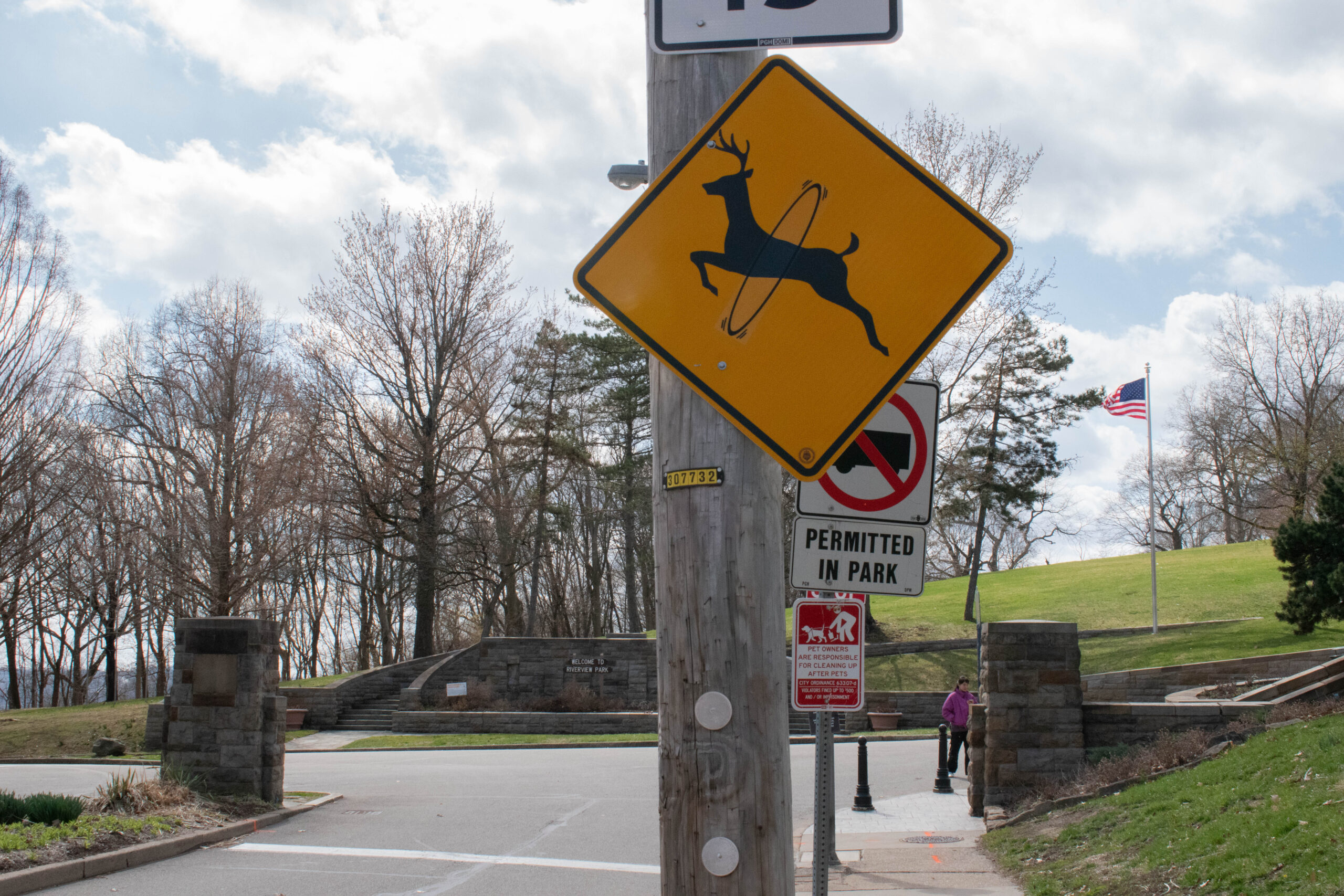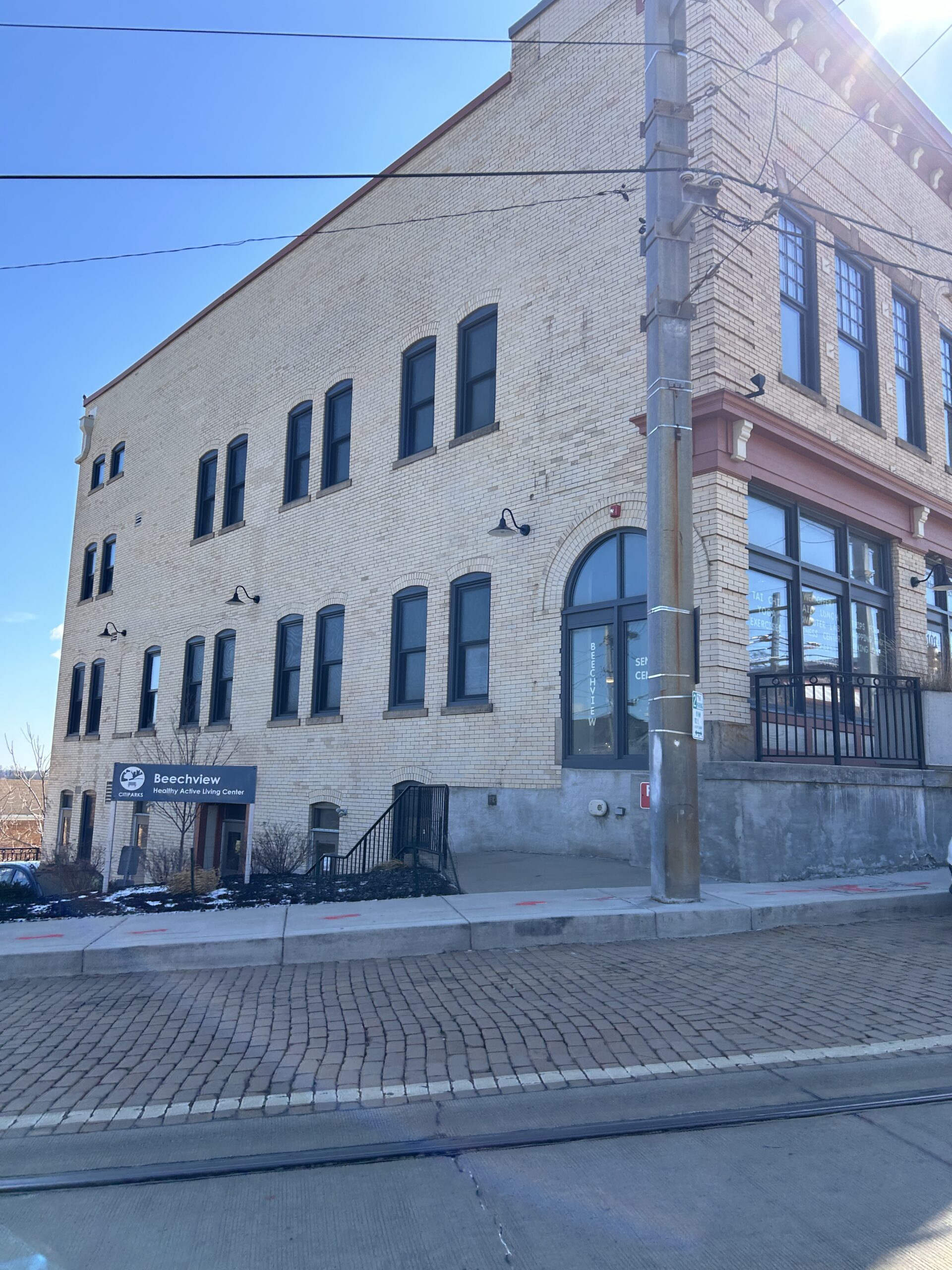By: Gavin Petrone
Walking through Riverview Park on a cool, late-March afternoon, one would be hard pressed to see any obvious sign of white-tailed deer.
No tracks, no visible buck rub on tree bark, no droppings; no deer. The deer’s meal of choice, sprouts and seedlings, litter the ground along Riverview’s trails. These plants were given a new lease on life after Pittsburgh rallied together to control deer overpopulation.
“This is how we wanted it to be,” Alison Keating, chair of Friend’s of Riverview Park’s deer committee, said, admiring the woodline of the park.
Keating, 44, of Manchester, was one among a group of city-wide allies, from government officials to neighborhood leaders, scheming an advocacy war against the deer.
According to her and rangers at the city’s Office of Public Safety, Riverview saw some of the worst ecological damage of all Pittsburgh’s parks by deer overgrazing.
But the battle didn’t begin there. Actually, it didn’t even begin in a park.
On one fateful morning in 2022, a small herd of about nine deer chose the wrong woman’s garden to graze in.
Wrath of Mardi

Gavin Petrone | Mardi Isler, 82, former president of the Squirrel Hill Urban Coalition, sits at a table in her office. Isler rallied Pittsburgh leaders to control the city’s deer population after they destroyed her front yard garden.
At about 7 a.m. sometime in 2022, Mardi Isler, 82, of Squirrel Hill, woke up to find her entire front yard garden decimated by a herd of several deer.
According to Isler, the deer had hit her entire block between Wightman Street and Murray Avenue, leaving nothing but half stems and droppings in their wake. Isler said her house’s decent distance from both Schenley and Frick Park should have spared her gardenfrom the deer’s appetite.
“There shouldn’t be nine deer walking down my street on some sunny, 7 a.m. morning, having just eaten all of my neighbors’ flowers and mine,” Isler said. “My landscaper [was] just berserk over what the deer [were] doing to all his customers.”
Later some deer came back, and Isler said it was difficult for her and her husband to make them leave.
“One day my husband and I came out, and there were two deer standing there right by my front porch,” Isler said. “And [he] started to bang on the chairs – we had metal chairs – and he started to bang on the chairs.”
“They just looked at us like, ‘What? You want us to move?’ So, he had to get a hose to get rid of them,” Isler said.
At this point, Isler said she was fed up.
A retired UnitedWay employee who at the time was president of the Squirrel Hill Urban Coalition (SHUC), Isler leveraged her community leadership role and started calling around.
It wasn’t long, she said, before she met Keating, who told her that Riverview had been having similar issues with overgrazing.

The two formed the Protect Our Parks & Gardens Coalition, a group of park rangers, veterinarians, landscapers and disgruntled neighbors who went to the city for a solution to the deer.
To kill or not to kill
Almost everyone in Protect Our Parks said they felt it was necessary to reduce the deer population – by lethal means – through an archery and sharpshooting program, according to Isler.
They met with Mayor Ed Gainey and other city officials at the Frick Environmental Center, where Isler said Gainey was receptive to the idea of utilizing lethal methods of population control.
“He actually asked people to raise their hands if there was anybody in the room who was opposed to sharpshooting, and there wasn’t,” Isler said.
A representative of Gainey’s could not be reached immediately for comment.
But in prior meetings, Protect Our Parks received pushback from Humane Action Pittsburgh, an animal rights advocacy group.
“Any method – lethal or no[t] – must be repeated every year, indefinitely,” Dickerson said in an emailed response. “The method the city is using is cheaper because it will not work. An effective lethal program would cost more in the long term than an effective non-lethal one.”
City officials say they gave it a shot.
Erica Heide, a senior park ranger at Frick Park who was present at the meetings, said that some non-lethal options were explored through outside studies.
First was relocation, which Heide noted resulted in a roughly 50% mortality rate in observed deer populations.
“It’s basically a death sentence to pick them up and move them,” Heide said, “and basically dump them in a new location. So it’s very, very rarely done.”
Trapping deer is also illegal without explicit permission from the Pennsylvania Game Commission, according to state law.
Sterilization measures, either through vasectomies or birth control vaccines, Heide said, are also too difficult; both financially and bureaucratically.
“On top of it being extremely expensive to do, you need permission from the [Game Commission],” Heide said, “which was just not on the table.”
Heide illustrated cost discrepancies, citing a Staten Island study researching the efficiency of nonlethal deer population control measures.
“Their first contract for 3 years was $3.3 million,” Heide said, “and they did not hit their quota [for sterilized deer] . . . In contrast, our program this year was not to exceed $100,000.”
Through this and other research, the coalition determined that lethal methods were their best course of action, according to Isler.
The Gainey administration said they approved, and the ball got rolling to begin a pilot archery hunting program to start cutting down on the deer.
The archers
The archery pilot program began on September 30, 2023 in Frick and Riverview Park, which Heide said was due to their size variations.
“Those parks were chosen because one’s the smallest – which is Riverview – and one’s the largest – which is Frick,” Heide said, “so we wanted to explore two different parts of a whole.”
Heide also noted that neither Riverview nor Frick Park have major roads running through them, making them safer options to test the pilot program in.
Thirty archers were selected through a lottery system, according to a city report, with 15 each split between Riverview and Frick Park. All archers must pass a background check before being permitted to hunt, Heide said, as well as an accuracy assessment.
“They had to shoot 100% 3 times in a row,” Heide said, “and that target was around the deer’s vital organs to make sure that it was an ethical shot.”
Heide also said the archers were assigned hunting zones, were required to report each hunt and had to donate the first doe they killed to food bank. Community groups around the parks were warned when archers would be there, Heide said.
According to a report published at the conclusion of the pilot program, 108 deer were harvested from both Frick and Riverview Park.

The report also notes that no public safety incidents occurred as a result of the program. Heide said there were some complaints, which were mostly from people out of the loop on the pilot program.
Archers were invited back for a second season after the city consulted with the U.S. Department of Agriculture (USDA) and community groups like Protect Our Parks.
The program was expanded into Schenley, Highland and Emerald View Park, but this time only 10 archers were permitted in each park, according to a city report.
The program began on September 21, 2024, and archers bagged 199 deer by its end on January 25, 2025.

Bag more deer and reduce landslides, Pitt researchers say
Roughly around the time when the city began its pilot archery program, Jeremy Weber, a professor at the University of Pittsburgh studying environmental economics and policy analysis, was leading a capstone research class.
The class’s research was centered around policy recommendations for the city related to deer overpopulation, Weber said.
“This deer project was a special interest of mine living in Squirrel Hill,” Weber said, “So, I got involved with it.”
Weber and his students published a roughly 20-page report on Pittsburgh’s deer overpopulation.
It notes that there is no effective way to track Pittsburgh’s deer, so it makes an estimate based on carcasses collected by the city.

and provided to authors via email from Bram Peart.” Authors note that the 2004 figure is from a 2005 Tribune-Review article.
Weber and his students’ figure notes a 411% increase in collection from 2004 to 2023. This is still a sketchy outline, though, according to Weber.
“This is a policy area where, generally, we’ve been flying blind data-wise,” Weber said, “because there’s no accurate estimate of the deer population.”
The biggest contribution of the report, beyond its later recommendations for action, are a wide ranging list of detrimental effects from deer overpopulation. The list spans from ecological damage to increases in deer-related car accidents.
But while reductions in native species among the park’s plants are an issue, deer overgrazing can lead to a bigger problem, Weber said: landslides.
As deer eat saplings and reduce forest density, according to Weber, less roots and canopies can make landslides a more frequent occurrence. Because over 65% of Pittsburgh’s woods exist on a slope of at least 25%, Weber said landslides can be a real result of overgrazing.

The report outlines five potential solutions for reducing Pittsburgh’s deer population. Options are both lethal and non-lethal, though the report notes that lethal methods are more effective.
Citing data from Pittsburgh’s pilot archery program, the report says that just archery will not be enough to keep up with deer reproduction rates. It recommends that along with archery, the city implement a sharpshooting program.
USDA drive-by shooters
The report covering the results of the 2024 to 2025 archery program notes that officials have greenlit USDA-sanctioned sharpshooters to begin culling deer in Riverview and Frick Park.
According to Heide, sharpshooters in teams of three enter the parks after they close at 11 p.m.
They drive through and shoot the deer with a silenced rifle, before logging the kill and loading them onto their truck.
“We really like to refer to it as targeted harvesting,” Heide said, “as we are honestly targeting the skinny or weak deer in the population and removing [them].
The sharpshooters are required to donate every deer they kill.
Heide added that archers usually target healthier deer because they bring home more meat.
The sharpshooters have harvested 128 deer as of March 28, according to Heide, which is about 118% more than what archers in the city’s pilot program bagged – in roughly ¼ of the time.
“They’re using thermal imaging, and all sorts of high-tech equipment,” Heide said, “to make sure that they have a safe shot before they take it.”
The sharpshooters concluded this first program at the end of March, and a formal report from the city is expected to follow.
Heide said the city only expects to use the sharpshooters to get the deer population under control, after which archers will continue to be used to maintain it.
As for Isler, the advocate of the sharpshooters and culling programs, she only has one last request before she is satisfied with the city.
“Next year I hope we’re in Hays [Woods],” Isler said.





